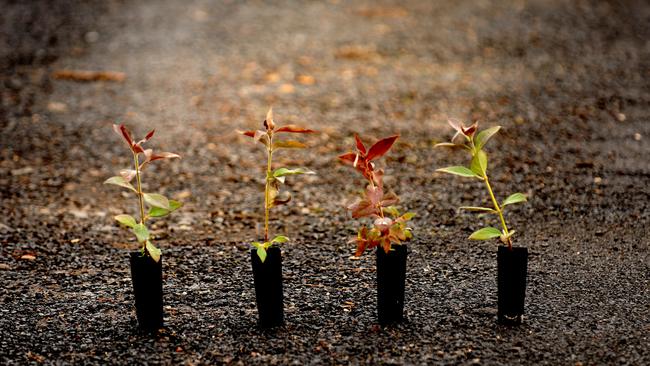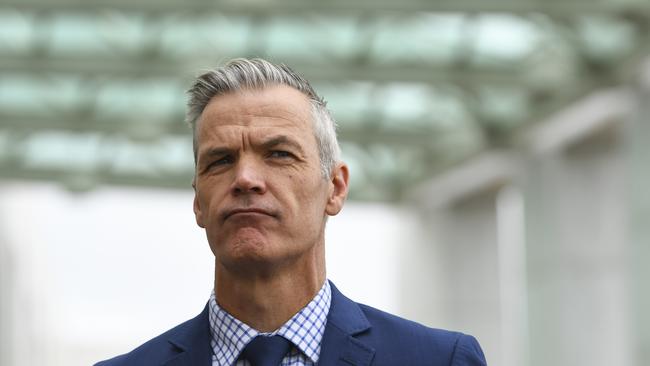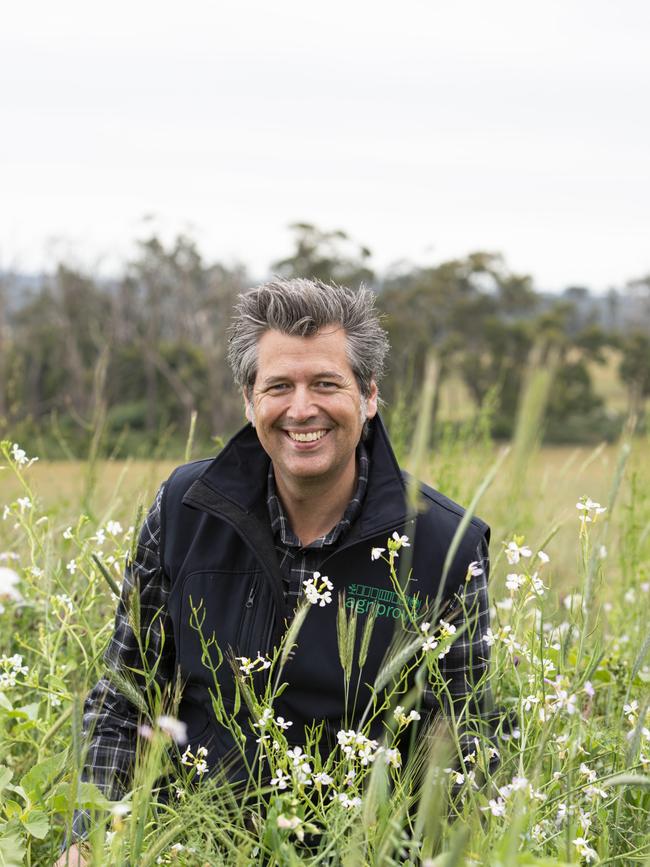What the safeguard mechanism means for agriculture
Land use conflict or opportunity? The Weekly Times takes a look at the safeguard mechanism and what it means for Australian landholders.

On a vast wedge of tropical savanna in Queensland’s Cape York Peninsula, one of Australia’s largest carbon farming businesses has purchased 522,000ha of cattle country — a new addition to a growing 1.3 million hectare portfolio.
The Holroyd aggregation combines cattle breeding with the production of a new commodity: carbon credits.
It is one of hundreds of new carbon farming projects expected to pop up across the country after Labor, with the support of the Greens, passed changes to a key climate policy known as the ‘safeguard mechanism’ last week.
For Corporate Carbon managing director Gary Wyatt, whose company runs the aggregation under the brand Paniri Agriculture, the project is an example of agricultural production and carbon farming “go(ing) hand-in-hand” as a “viable successful business model”.
But farming groups and experts have warned Australia could be entering a new age of land use conflict as carbon companies, as well as oil and gas giants, move to buy tightly held land to offset the emissions of the country’s biggest polluters.
The safeguard mechanism places new caps on Australia’s 219 biggest polluters, requiring them to drive down their emissions by 30 per cent by 2030.
That means big business for companies like Corporate Carbon, as big emitters who can’t cut their emissions fast enough race to buy up carbon credits to offset them.
Mr Wyatt’s internal modelling suggests increased demand for carbon credits under the safeguard mechanism could double carbon credit production from 17.5 million tonnes of greenhouse gas abatement to 35 million tonnes over five to 10 years, with the value per carbon credit potentially doubling to $75/t over the same period.

To produce those offsets, companies like his will need access to more agricultural land.
“We are looking for opportunities to expand (Paniri Agriculture) through securing additional assets where agricultural production and the creation of carbon credits can be integrated,” he said.
Meanwhile Corporate Carbon’s offshoot, soil carbon sequestration company Agriprove, “has barely reached a small fraction of the potential landholders or soil carbon projects that could be done around the country”, he said.
The two companies are already giants in the agricultural offsets market. Combined, they manage more than half of Australia’s agricultural offsets.
Fossil fuel companies like Woodside Burrup and Inpex are now muscling in to the sector as well, buying up agricultural land in Western Australia and NSW to plant trees to offset their emissions.
Concerns over land use conflict
As the safeguard mechanism was being debated in parliament last week, National Farmers Federation chief executive Tony Mahar warned the policy could “potentially escalate land use conflict”.
“The safeguard mechanism will turbo charge demand for offsets, and with few other options on the table, emitters will look to farmland,” he said in a statement.
Australia-wide, the majority of the 751 agricultural offset projects already underway are soil carbon projects, which work alongside traditional farming methods like cattle grazing, providing farmers with an additional income stream.
But about 25 per cent, or 192 projects, are producing credits by planting trees on agricultural land — potentially taking that land out of agricultural production.
Mr Mahar cautioned farmers needed to be “very careful not to jeopardise our ability to sustainably grow food and fibre”.

His comments were backed by University of Melbourne professor of sustainable agriculture Richard Eckard.
Mr Eckard cautioned there wasn’t enough agricultural land to both offset emissions from the fossil fuel sector and bring down emissions from agriculture.
“If agriculture sells all its soil, carbon and tree carbon (credits) to the industrial sector under the safeguard mechanism, by 2030, agriculture can’t access its own supply chain demands,” he said.
On a national scale, he argued there simply wouldn’t be enough land to meet demand.
“If you took all the big mines on the northwest shelf (of Western Australia) and the 167 million tonnes of emissions they produce per year, and you bought up all the wheat land in Western Australia and put it down to trees — that’s 4.5 million hectares of wheat — you would only offset half of (the mines’) emissions,” he said.

Soft cap on offsets
Under the safeguard mechanism, there is no hard limit on the number of carbon credits a company can buy to offset its emissions, but an amendment negotiated by the Greens introduced a ‘soft cap’ on offsets of 30 per cent. That means if a facility is using more than 30 per cent offsets to get under its baseline, it will have to explain to the Clean Energy Regulator why it is necessary.
Farmers for Climate Action chief executive Fiona Davis said she was “reassured” by the clause, but said “the devil would be in the detail” of the new agreement.
Overall, she welcomed the safeguard mechanism as putting Australia on the path to reduced emissions, which she said would “benefit farmers and farming communities”.
But Mr Eckard cautioned the 30 per cent cap may still be too high.
“If all the fossil fuel industries came to the ag sector and wanted their 30 per cent (worth of offsets), that 30 per cent doesn’t exist,” he said.
Ag emissions increase
Only a few agriculture-related facilities have come directly under the purview of the safeguard mechanism, which targets sites (not companies) emitting more than 100,000 tonnes of Co2 per year. Those sites are Queensland and Western Australian fertiliser production facilities owned by Yara Pilbara Fertilisers, CSBP, Incitec Pivot, Orica and Queensland Nitrates.
Under the safeguard mechanism, the sites will need to bring down their emissions by 30 per cent over the next six years compared to their individual baseline — no easy feat for a facility like the Yara Pilbara Fertilisers ammonia plant in Western Australia, which produced 1.3 million tonnes of CO2 in 2021-22.
But all are working to rapidly reduce their emissions with investments in green hydrogen technology — producing ammonia using renewable energy rather than gas — and all reported emissions reductions in 2021-22, ranging from 1 per cent (Incitec Pivot’s Moranbah facility) to 59 per cent (Queensland Nitrates’ ammonium nitrate plant).
Across the agriculture sector, not all companies are managing to bring down their emissions.
Data from the federal government’s National Greenhouse Gas Inventory showed agricultural emissions increased to 81.4 million tonnes of Co2 equivalent in the year to September 2022 — a more than two million tonne increase on the previous year.
KPMG agribusiness sector lead Georgie Aley said many businesses had struggled to bring down their emissions in a bumper season that boosted grains production and stocking rates, meaning companies had to process larger-than-normal commodity volumes.
Agribusinesses in the grains and livestock sector reported particularly big emissions increases.
Western Australian grains giant CBH group increased its emissions by 19 per cent to 66,000 tonnes, while east coast grains handler GrainCorp’s emissions shot up 11 per cent to 128,000 tonnes in 2021-22 as both handlers processed record harvests.
Beef producer Kilcoy Industries increased its emissions by 16 per cent to 96,000 tonnes, beef producer and exporter NH Foods’ emissions went up 14 per cent to 122,000 tonnes, and Bindaree Beef Group reported an emissions increase of 13 per cent, bringing its total to 80,000 tonnes.
With 62 per cent of Australian agribusinesses committed to being net zero by 2050, and others with 2030 targets, Mr Eckard said many would be looking to “inset” emissions either on their own land or through partnerships with their producers to meet their own targets.
They would not be able to do that if offsets from that land had already been sold on the carbon market, he said.
“There are no surplus carbon credits in the ag sector,” Mr Eckard said.


